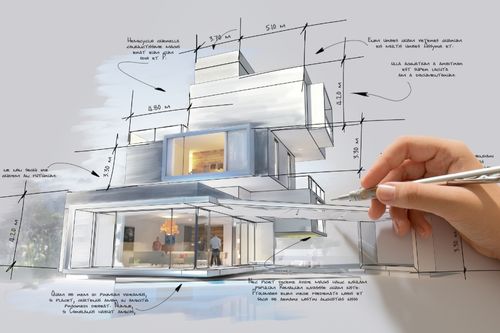The Vital Duty of an Engineer fit Lasting Urban Atmospheres for Future Generations
The role of an engineer in crafting sustainable urban environments is progressively pivotal in reacting to the difficulties of climate change and urbanization. By seamlessly integrating eco-friendly concepts into their layouts, engineers not just improve the visual and practical high quality of urban rooms yet additionally address pushing problems such as power performance and social equity. Their proficiency in innovative products and area interaction forms advancements that reverberate with regional values and ambitions. As we discover the intricacies of this field further, it ends up being noticeable that the future of city living might hinge on the very methods engineers employ today.
Understanding Lasting Urban Style
Sustainable urban layout incorporates ecological principles with urban planning to produce atmospheres that are not just habitable yet also durable. This method stresses the value of integrating natural systems into the urban fabric, making certain that advancement meets the demands of the existing without endangering the capacity of future generations to satisfy their very own demands. Crucial element of lasting metropolitan layout consist of reliable land use, the promotion of biodiversity, and the integration of green areas, every one of which add to enhanced lifestyle for citizens.
Additionally, lasting city layout prioritizes the reduction of the metropolitan heat island effect, boosted air quality, and reliable stormwater management. It encourages making use of sustainable sources and energy-efficient building methods, which considerably lower carbon impacts. Sustainable urban layout fosters social equity by creating easily accessible public spaces and advertising mixed-use advancements that provide to diverse populaces.
Via thoughtful planning and innovative style methods, lasting metropolitan environments can enhance area durability versus climate modification while cultivating financial development. This all natural approach not only addresses immediate metropolitan obstacles yet likewise lays the groundwork for healthier, much more sustainable cities for generations to find.
Trick Obligations of Architects
Architects play an essential duty fit sustainable city environments by converting style concepts right into concrete frameworks and spaces. Their responsibilities incorporate a large array of tasks that add to the general success of urban design jobs.
Firstly, designers conduct complete site analyses to comprehend the environmental, social, and cultural context of their projects. This foundational expertise notifies their style choices, making sure that buildings harmonize with their surroundings. They likewise take part in collective procedures with stakeholders, including city planners, designers, and the community, fostering a comprehensive technique to metropolitan advancement.
In addition, engineers are entrusted with producing layouts that maximize power performance, source preservation, and capability. They should adhere to local zoning regulations, constructing codes, and sustainability certifications, guaranteeing conformity while pushing the boundaries of advancement.

Ingenious Materials and Techniques
In the pursuit of environmentally responsible design, ingenious materials and methods have actually become vital elements in the development of sustainable metropolitan settings. Engineers are progressively making use of products that minimize environmental influence while improving energy performance. For instance, recycled materials, such as reclaimed timber and repurposed metals, not only decrease waste but likewise include unique visual qualities to structures.
Additionally, advancements in technology have actually resulted in the growth of high-performance materials, such as shielded concrete types (ICFs) and photovoltaic or pv glass, which add to energy conservation and harness renewable energy. Methods such as easy solar design and environment-friendly roofs even more exemplify exactly how architecture can balance with natural systems, minimizing reliance on synthetic cooling and heating.
In addition, the assimilation of smart products, which adapt to environmental adjustments, offers appealing avenues for boosting building efficiency - cda architects. These products can reply to temperature changes or dampness levels, enhancing comfort and sustainability
Eventually, the critical selection and application of innovative materials and methods equip engineers to create metropolitan spaces that are not just functional and cosmetically pleasing but additionally resistant and eco accountable, guaranteeing a lasting future for generations to find.
Area Involvement and Cooperation
The success of innovative materials and techniques in i thought about this sustainable city design is dramatically enhanced by active community engagement and cooperation. Architects have to acknowledge that the built environment profoundly affects the lives of local residents, making it important to involve them in the design process. Involving the community fosters a sense of ownership and accountability, making certain that developments not just fulfill visual and practical needs yet also reflect the values and goals of those who occupy them.

Effective community involvement additionally aids in focusing on social equity within city growth. By taking into consideration the voices of marginalized populaces, architects can develop areas that are inclusive and fair. By doing this, neighborhood engagement and collaboration end up being indispensable to attaining genuinely sustainable urban environments that serve the needs of existing and future generations.
Future Fads in Sustainable Architecture

In addition, advancements in technology are shaping future patterns in lasting design. The integration of wise products and structure systems enables real-time energy monitoring, enhancing efficiency and decreasing carbon footprints. Technologies such as green roofs, living wall surfaces, and energy-generating explanation facades are ending up being conventional methods, even more advertising eco-friendly balance within city environments.
Furthermore, a shift in the direction of biophilic design is gaining grip, stressing the connection between nature and human health. By incorporating all-natural components, architects create areas that promote psychological wellness while advertising biodiversity.
Final Thought
In conclusion, designers are essential ahead of time sustainable urban settings via their competence in design, innovative materials, and community engagement. By focusing on power effectiveness and resource conservation, these professionals contribute to the production of durable urban spaces that fulfill the requirements of present and future generations - cda architects. The combination of ecological principles not only enhances livability yet additionally cultivates social equity, making certain growths reverberate with websites the values and aspirations of the communities they serve